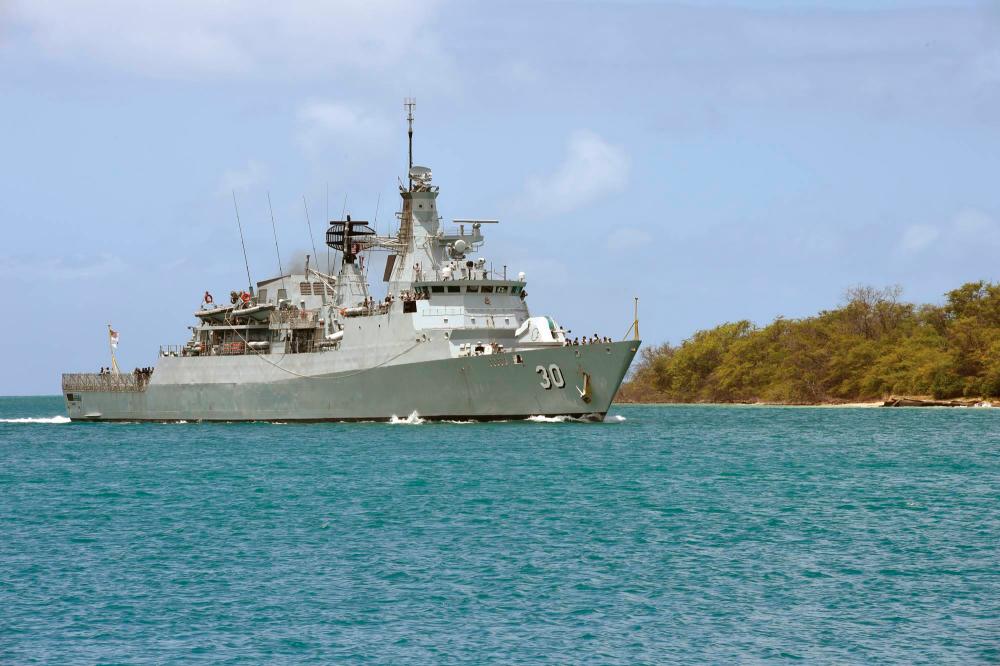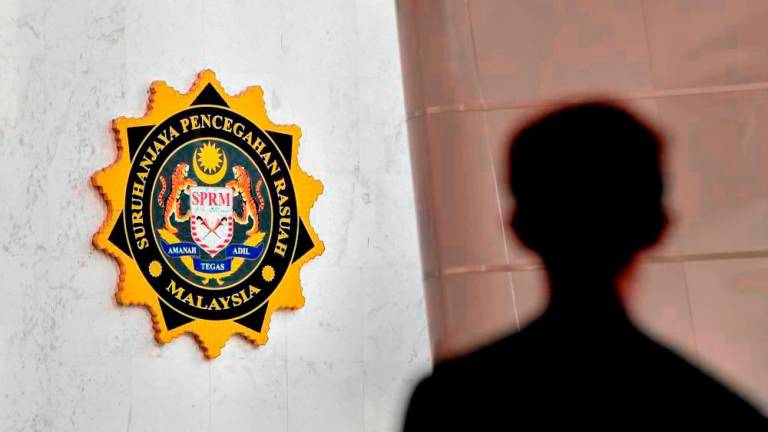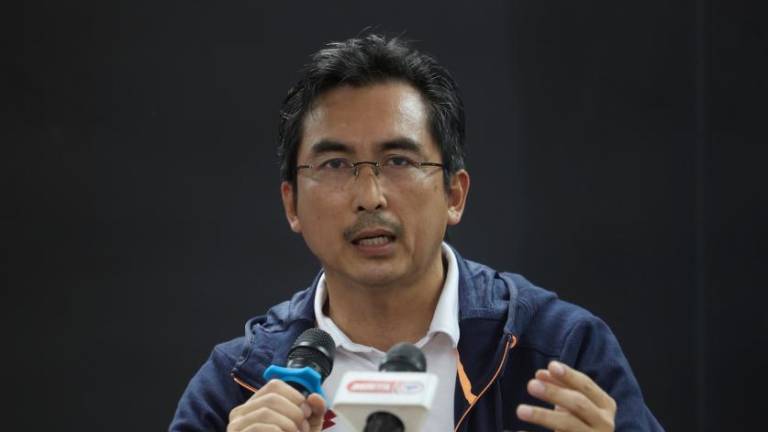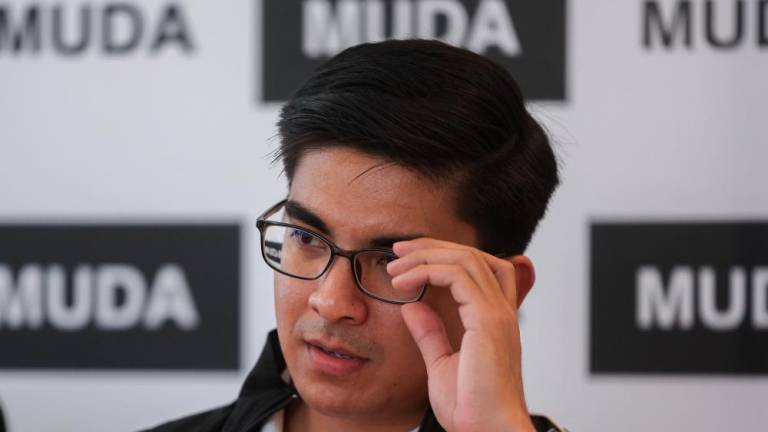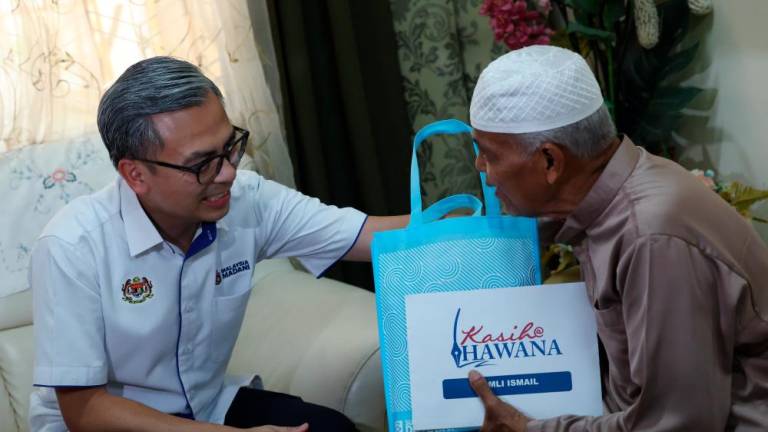GEORGE TOWN: There were all kinds of thoughts floating in my mind during the six-hour journey from Wisma Bernama in Kuala Lumpur to Swettenham Pier (also known as Port Swettenham), here.
I had been assigned to participate in a patrol conducted by the Royal Malaysian Navy’s (RMN) frigate KD Lekiu on June 5 under Op Benteng to monitor the waters around the Straits of Malacca.
Op Benteng was activated by the National Task Force on May 12 this year with the Malaysian Armed Forces given the mandate to coordinate national border control operations with other enforcement and security agencies, including the Royal Malaysian Air Force, Malaysian Maritime Enforcement Agency, police, Ministry of Health, Civil Defence Force, Immigration Department and Volunteer Corps Department.
Op Benteng is aimed at preventing the entry of boats carrying illegal immigrants into Malaysian waters and curbing cross-border criminal activities as well as containing the spread of Covid-19.
I felt both nervous and excited ahead of the assignment as not everyone gets the chance to go on-board a sophisticated naval vessel.
Although the possibility of having to endure rough seas bothered me a bit, all that disappeared as soon as I set my eyes on the huge and imposing 106-metre-long KD Lekiu, which has a height of 3.6 metres and width of 12.8 metres.
I was awestruck. I remember seeing a photograph of this warship about two years ago in a military magazine belonging to my uncle but little did I realise then that I would one day get the opportunity to sail on it.
Impressive
The media team invited to participate on the June 5 Op Benteng patrol on-board KD Lekiu comprised 10 journalists, photographers and cameramen from Bernama TV, Bernama Wires, TV3 and RTM.
Upon our arrival in Penang on the eve of our “expedition”, we were whisked off to the RMN volunteer reserve training centre at KD Sri Pinang in Gelugor where we spent the night. The next morning, we left by van for Swettenham Pier, located about seven kilometres away.
In view of the Covid-19 pandemic, we had to have our temperature taken before we were allowed to board the frigate.
On-board, its crew members could be seen hoisting their colours as a symbolic gesture of commencement of duty, as well as preparing the ship for the six-hour operation and voyage to the RMN base in Lumut.
It is no mean feat to be on duty on a naval ship that sometimes can stretch for months. It is no place for the feeble-minded because at times the sea can be turbulent and only crew members endowed with the necessary physical, mental and emotional strength can endure such perilous situations.
KD Lekiu has an able 169-member crew, led by its commanding officer Captain Shaiful Nizam Abdul Manan. The frigate is said to be equipped with a three-dimensional weapons system – anti-air, surface and underwater – and can reach a speed of up to 28 knots.
The vessel was built in Glasgow, Scotland, and was entered into RMN’s inventory in December 1994.
Super Lynx MK100
As soon as KD Lekiu set sail from Swettenham Pier at 10 am sharp, the media team was taken to its Combat Information Centre (CIC). The CIC is a room in a warship that serves as a tactical centre and provides processed information for command and control during any operation.
It was a little dark inside KD Lekiu’s CIC, which was filled with various gadgets and computer screens displaying information pertaining to the sea condition, boats sailing in the vicinity of KD Lekiu and other matters.
We were also informed that Captain Shaiful Nizam, the commanding officer himself, was present on-board the ship and got to meet him. The captain is the one who issues orders as to where the ship would sail and when to intercept boats suspected to be ferrying illegal immigrants.
The media practitioners were also given the opportunity to take a closer look at the ship’s Super Lynx Mk 100 fighter helicopter, which is one of the six operated by RMN’s 501st squadron.
During an operation to monitor and stop the entry of suspicious vessels into Malaysian waters, this helicopter serves as the “eyes” of the naval ship as it can monitor movements on the sea from a radius of 70 nautical miles outside KD Lekiu’s monitoring capacity.
I, however, did not get the chance to fly on the Super Lynx Mk 100, operated by Commander Hairol Isma Ibrahim, that day as seats were limited and I had to give way to Bernama photographer Muhammad Azlim Mansor.
Fast boat
KD Lekiu is also equipped with the Combat Boat (CB) 90, a fast military assault craft which it uses to intercept boats carrying illegal immigrants.
Eager to find out how the CB90 – which can move at a speed of 45 knots – operated, I boarded the craft together with four RMN personnel and four others from RTM and Bernama TV.
The CB90 is no ordinary boat. Powered by a water jet system that enables it to move fast and silently, the boat can be stopped abruptly even whilst whizzing at top speed; it can also execute a sharp 110-degree turn at high speed. We were told that navy personnel handling the CB90 do not make sharp turns “for fun” but to approach and intercept illegal boats.
Not surprisingly, the CB90 is among RMN’s most useful assets when it comes to operations to monitor and intercept boats entering Malaysian waters.
The June 5 Op Benteng operation in which the media participated was an uneventful one as there were no unwelcome intrusions. Nevertheless, it was a memorable excursion for me as just being on board an RMN warship was thrilling enough. - Bernama



